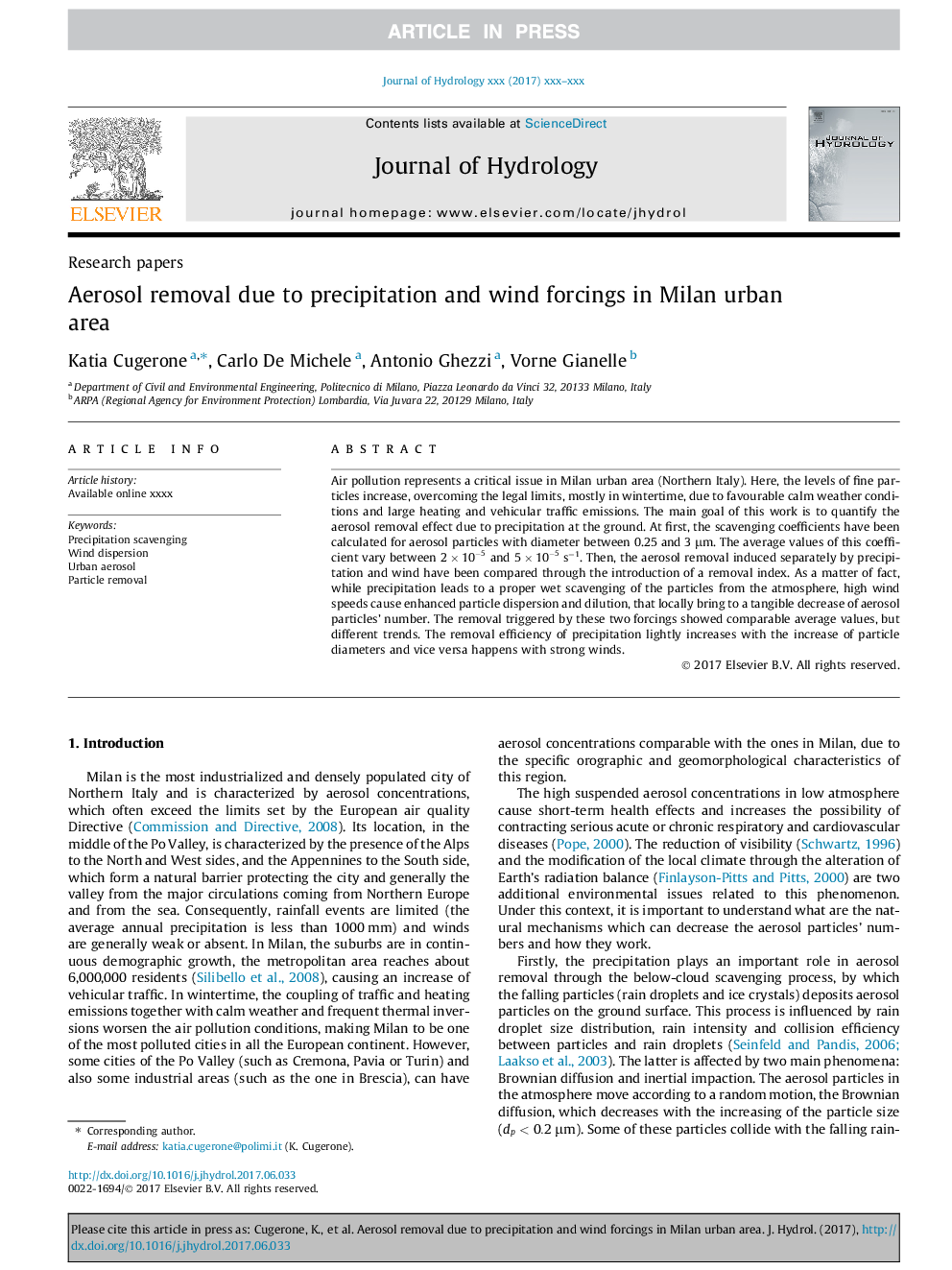| Article ID | Journal | Published Year | Pages | File Type |
|---|---|---|---|---|
| 8895242 | Journal of Hydrology | 2018 | 7 Pages |
Abstract
Air pollution represents a critical issue in Milan urban area (Northern Italy). Here, the levels of fine particles increase, overcoming the legal limits, mostly in wintertime, due to favourable calm weather conditions and large heating and vehicular traffic emissions. The main goal of this work is to quantify the aerosol removal effect due to precipitation at the ground. At first, the scavenging coefficients have been calculated for aerosol particles with diameter between 0.25 and 3 μm. The average values of this coefficient vary between 2Ã10-5 and 5Ã10-5 sâ1. Then, the aerosol removal induced separately by precipitation and wind have been compared through the introduction of a removal index. As a matter of fact, while precipitation leads to a proper wet scavenging of the particles from the atmosphere, high wind speeds cause enhanced particle dispersion and dilution, that locally bring to a tangible decrease of aerosol particles' number. The removal triggered by these two forcings showed comparable average values, but different trends. The removal efficiency of precipitation lightly increases with the increase of particle diameters and vice versa happens with strong winds.
Related Topics
Physical Sciences and Engineering
Earth and Planetary Sciences
Earth-Surface Processes
Authors
Katia Cugerone, Carlo De Michele, Antonio Ghezzi, Vorne Gianelle,
